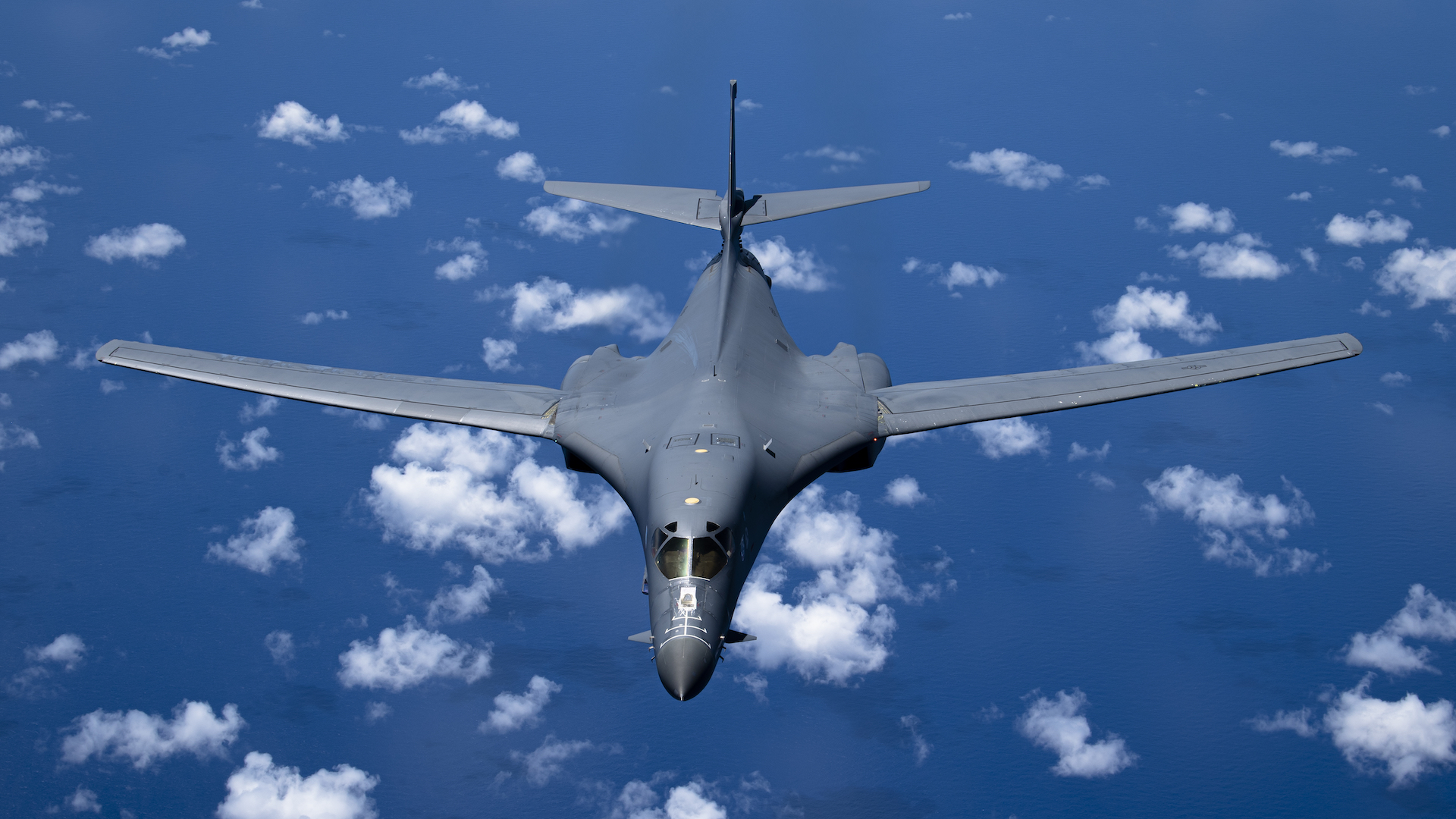

The Air Force B-1B Lancer bomber — or the “bone” as its pilots and crews call it — may already carry the largest conventional payload in the service’s fleet, but that isn’t going to stop the service from loading it up with as many munitions as humanly possible.
Air & Space Forces Magazine reports that Boeing has developed a new external pylon for the B-1B that could significantly increase its munitions-carrying capacity, a system that is currently undergoing testing by the Air Force.
Boeing designed the so-called Load Adaptable Modular (LAM) pylon to turn the B-1B into a testbed for hypersonic weapons to allow the Air Force to shift such testing away from its existing overextended B-52 Stratofortress bomber fleet, according to Air & Space Forces Magazine.
With a 7,500-pound maximum load weight, the LAM can be installed on the six B-1B external hardpoints that, initially designed to carry nuclear-tipped cruise missiles, were inactivated when the aircraft’s nuclear mission was cancelled under the START Treaty.
As Jennifer Wong, Boeing’s director of bomber programs, told Air & Space Forces Magazine, the new LAMs “click into a new position … like Lego.”
While the LAMs can potentially haul a dozen Hypersonic Attack Cruise Missiles (HACM), Boeing data provided to Air & Space Forces Magazine indicates that the new pylons could boost the B-1B’s conventional guided and unguided munitions capacity by up to 50 percent.
That translates into 12 additional 2000-pound Joint Direct Attack Munitions, both standard and extended range, for a total carriage of 36 munitions; 12 additional AGM-158 Joint Air-to-Surface Standoff – Extended Range missiles for a total carriage of 36 munitions; or an additional 48 Small Diameter Bombs for a total carriage of 144, according to Boeing data.
Subscribe to Task & Purpose Today. Get the latest military news, entertainment, and gear in your inbox daily.
Initially developed in 1970 as a replacement for the B-52 and a staple of the Air Force’s fleet since 1985, the service retired 15 B-1Bs in 2021, leaving 45 airframes available for missions at Ellsworth Air Force Base in South Dakota and Dyess Air Force Base in Texas.
The Air Force’s B-1 fleet was among the busiest during the wars in Iraq and Afghanistan. According to the Air Force, eight of the swept-wing bombers dropped nearly 40 percent of the total bombs (by weight) employed in the first six months of Operation Enduring Freedom in Afghanistan. Lancers also dropped 43 percent of the total tonnage in Operation Iraqi Freedom, per the service.
“Beginning to retire these legacy bombers allows us to pave the way for the B-21 Raider,” Brig. Gen. Kenyon Bell, AFGSC director of logistics and engineering, said in a statement tied to the 2021 retirement ceremony. “Continuous operations over the last 20 years have taken a toll on our B-1B fleet, and the aircraft we retired would have taken between $10 and 30 million per aircraft to get back to a status quo fleet in the short term until the B-21 comes online.”
Despite the divestment push, the Bone fleet is still hard at work, flying bomber task force missions from Guam in a message to adversaries in the Indo-Pacific, practicing for anti-ship strike missions in the Black Sea, and even hunting illegal fishing boats off of South America. Now, the LAM may end up breathing new life into the ageing airframe.
“What this does for the B-1 is, it does keep it in the fight longer, it keeps it relevant, and again, takes some of the workload off the B-52,” As Boeing’s Wong told Air & Space Forces Magazine.
The latest on Task & Purpose
- 7 Hollywood actors who made the most realistic GWOT operators on screen
- How a Marine’s COVID-19 vaccine refusal led to 113 days in the brig
- Russia lost a hypersonic missile trying to destroy one of Ukraine’s Patriot missiles
- Air Force F-15 takes an accidental bath in drainage canal after botched landing
- Fort Cavazos battalion commander fired for misconduct